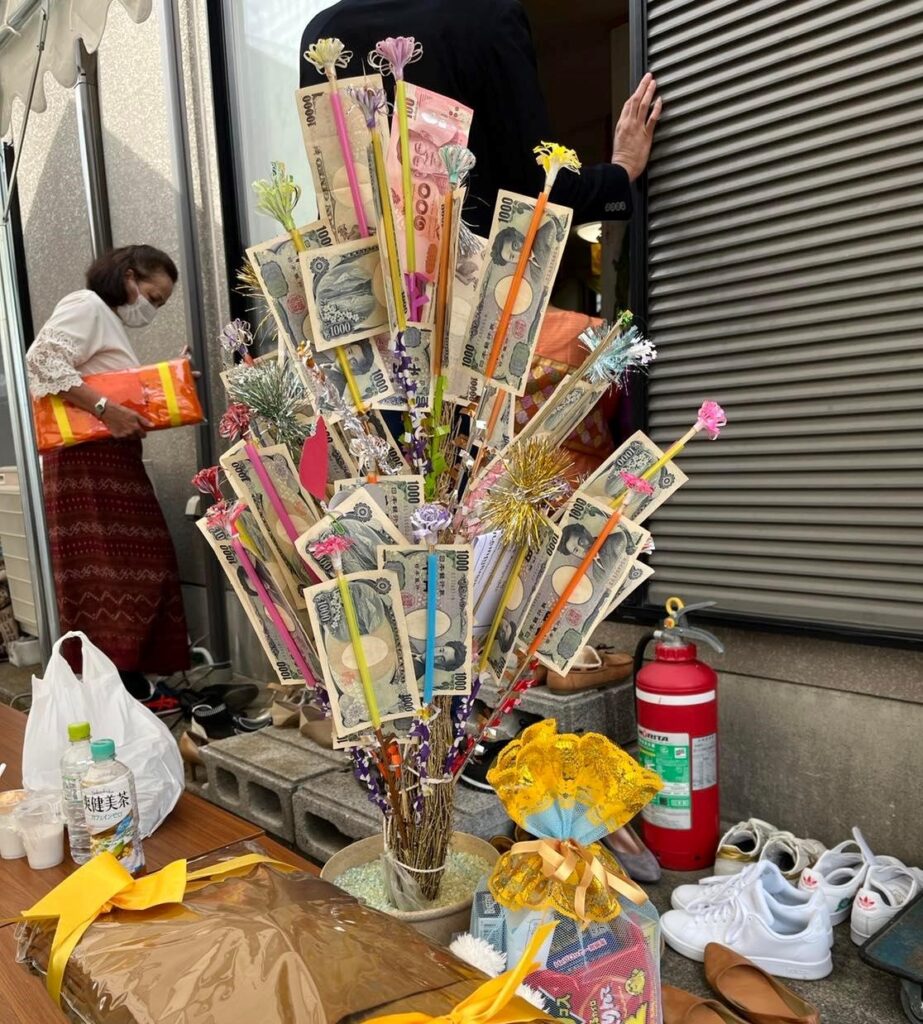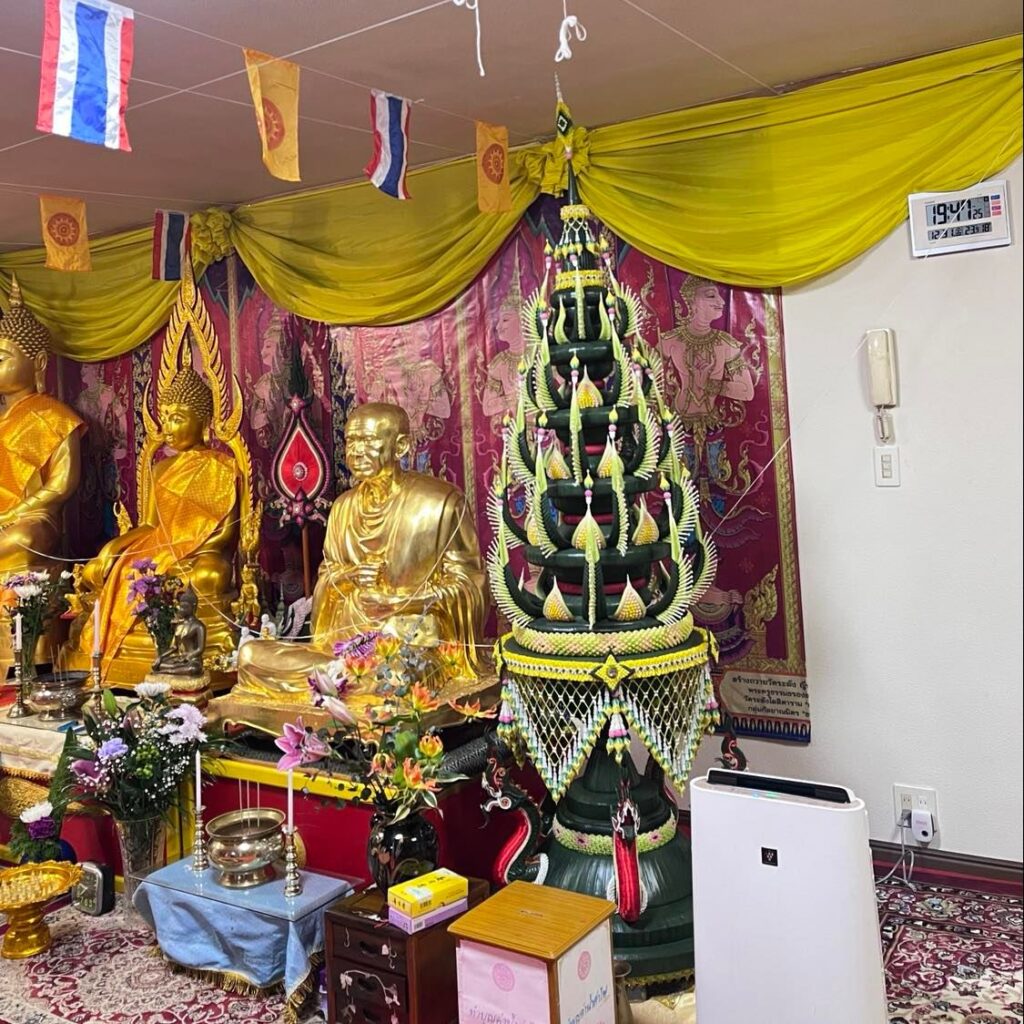小笠原諸島において気候変動の影響をうけるアオウミガメの保全と利用
研究全体の概要 小笠原諸島は気候変動の影響を受けやすいアオウミガメの世界的な産卵地として知られている。そしてまた、アオウミガメの保全と食利用が同時におこなわれている珍しい地域である。しかしながら、アオウミガメの保全と食利用についての包括的…

Thai Theravada temples in Japan carry a cultural significance among Thai migrants. Despite the previous literature, Thai temples abroad can function more than as support mechanisms for vulnerable migrants. The reasons for visiting Thai temples among key informants are varied. The previous narrative may be suitable for those who have language limitations. However, for those who have language proficiency, Thai temples offer either a Thai environment or Thai practices. The Buddhist network among Thai migrants in Japan has various functions.
According to Japanese governmental statistics in 2021, 36% of religious organizations are Buddhist temples, and only 3% constitute “others,” among which are included religious congregations connected to overseas religious organizations, and this includes the Thai and other Southeast Asian Buddhist temples in Japan where migrants congregate (e-Stat, 2021). Even though they are under the same umbrella of Buddhism, they Japanese and Thai Buddhist temples are officially differentiated. This highlights the differences between two sects. Although number of Thai temples is not statistically significant, these temples are well recognized among the Thai community and are not widely known by local Japanese. This may lead us to discuss its cultural significance. When there are many Japanese Buddhist temples around, it is interesting to further study why Thai migrants visit other (mostly Thai or also Lao) Buddhist temples. One possible reason is the difference between the Mahayana and Theravada schools. However, as society has its layers of complexity, it is likely to have more than one solid reason. Therefore, I am interested in pursuing the topic of Thai migrants and their Buddhist network.
The primary purpose of the trips is to conduct a field survey to assess research sites. Studying migrant communities at Thai temples in Japan can provide a sound understanding of how migrants use Buddhist networks to create support mechanisms and can help the researcher conduct the original research aim, that is to understand the role of Buddhist networks among Myanmar migrants in the Thai interior. Some temples receive official support from the Thai Embassy in Japan, which may allow them to recruit a huge number of Thai supporters.

During around two months of my fieldwork, I visited four Thai Theravada temples and one Lao temple in the Kanagawa and Tokyo areas during the events of the Kathina ceremony, the Late King Bhumipol’s birthday, and New Year’s overnight pray and meditation. As a result, I can identify research field locations and establish relationships with 13 key informants: 10 females and 3 males, whose ages range from 20s to 70s. They have various reasons for living in Japan, ranging from marriage, work, and retirement. A Buddhist network is a social capital for some Thai migrants. I divide my key informants into two categories by language proficiency: first, those who do not know/know only basic Japanese; and second, those who are capable of Japanese but prefer to stay in a Thai cultural environment, either over a short period of time or in the long term. The first group tends to socially rely on the Thai Buddhist community. While the second group may have other groups of friends outside of the temple, they prefer to observe Thai Buddhist practices. The story of Jinju and Swang (pseudonym) can represent people in the second group.
Jinju came to Japan with his mother when he was in elementary school and continued his studies in Japan. Therefore, he holds Japanese nationality and can speak fluent Japanese. Jinju is working at a famous Japanese electronics company. Despite being raised in Japan, Jinju seems to have enjoyed Thai culture. He volunteers as a member of the temple committee and hangs out with a group of laypersons. When I first met him, Jinju was carrying his portable speaker, listening to a Dhamma channel. At first, I thought it was because we were at the temple, so he was listening to something Thai. But he also has lists of Thai songs in his car, which is a personal space as well.
Swang is married to a Japanese husband and has been in Japan for more than 5 years. She can speak fluent Japanese and is working as an officer in a governmental organization. Swang usually visits Japanese temples but will visit a Thai temple on special occasions to offer food to monks. She explains that it is because she cannot practice offering (Sangathan in Thai) at a Japanese temple. Part of our conversation, Swang told me, “We are Thai, so we have to make merit at a Thai temple”.
Further investigation into related issues 1) what can a Thai temple offer laypersons, particularly in times of crisis? 2) the monk-lay relationship as well as the lay-lay relationship3) as there is more than one Thai temple in the area, what is the identity of “Thai Buddhists” and what is the politics between Thai temples?
e-Stat. 全国社寺教会等宗教団体・教師・信者数. <https://www.e-stat.go.jp/stat-search/files?page=1&layout=datalist&toukei=00401101&tstat=000 001018471&cycle=0&tclass1=000001160766&tclass2val=0.>(December 10, 2021)
Copyright © 附属次世代型アジア・アフリカ教育研究センター All Rights Reserved.